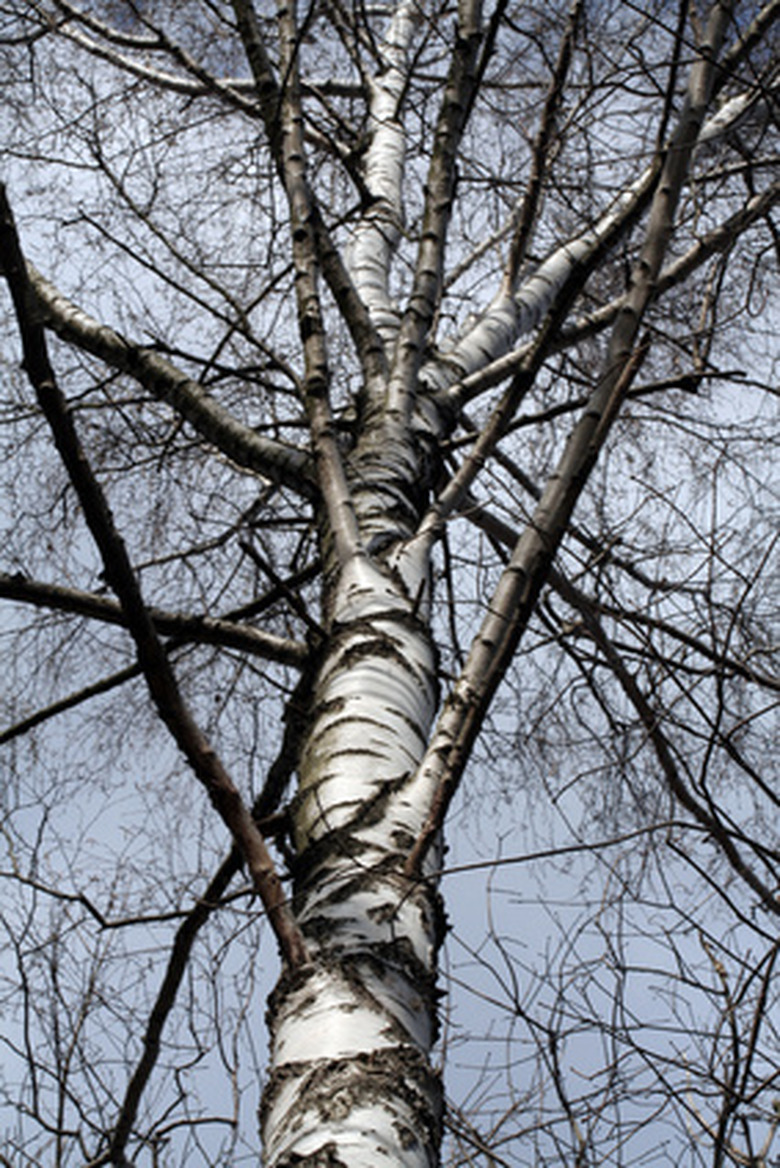Black Birch Tree Diseases In Pennsylvania
Pennsylvanian black birch trees are susceptible to a number of fungal diseases and infections. Although relatively strong, resistant enough to thrive through harsh state winters, infected trees can be dangerously weakened or killed when not treated. Although many of these infections are treatable, gardeners often have problems keeping cured trees from being reinfected.
Black Birch
Black birch is a tree that can normally grow to about 60 feet in height and is constantly found in fertile lowlands or rocky ridges throughout Pennsylvania. The strong wood is harvested for furniture and fuel. A variety of animals and birds feed on the buds, seeds and fruits of the tree, while deer and rabbits will browse through the twigs.
Diseases
Three examples of dangerous infections birch trees can experience in Pennsylvania are sterile conk trunk rot, polypore and white trunk rot. These fungal diseases are highly infectious and most often lead to death for the organism when left untreated.
- Pennsylvanian black birch trees are susceptible to a number of fungal diseases and infections.
- Three examples of dangerous infections birch trees can experience in Pennsylvania are sterile conk trunk rot, polypore and white trunk rot.
Symptoms
Sterile conk trunk rot is a fungus that breaks from beneath the cracked surface bark and will cause serious decay within the interior of the tree, often leading to death. The polypore fungi will also attack the bark of the tree, with fruiting mushroom bodies appearing on its surface. Once this takes place the damage within the tree is already long-term and will eventually cause the tree to break apart. Lastly, white trunk rot damages the wood density of the bark. It is less lethal than other fungal disease but makes the tree unsuitable for lumber harvest.
Reproduction
These fungal diseases are spread by the reproduction of various fungi. As the fungi begin to spore, their reproductive material is carried by insects and wind and transferred to host organisms. Some fungi strands need to spread from host to host throughout the year to successfully complete their life cycle. Researching these varieties of fungi and their reproduction paths is the first major step in preventing the growth and spread of fungal diseases.
- Sterile conk trunk rot is a fungus that breaks from beneath the cracked surface bark and will cause serious decay within the interior of the tree, often leading to death.
Solutions
Most fungi disease are difficult to prevent and even harder to cure once they've been established within the organism. Garden stores usually sell fungicidal sprays, which will help destroy fungus already present within the tree. All manufacturer instructions should be followed precisely when applying fungicide to plants. Consequences of misuse include further damaging the tree and worsening the infection.
References
- Pennsylvania Department of Conservation and Natural Resources: Black Birch
- Forestry Development: Common tree diseases
- "Elsevier's Dictionary of Fungi and Fungal Plant Diseases"; G. Creber ; 1998
